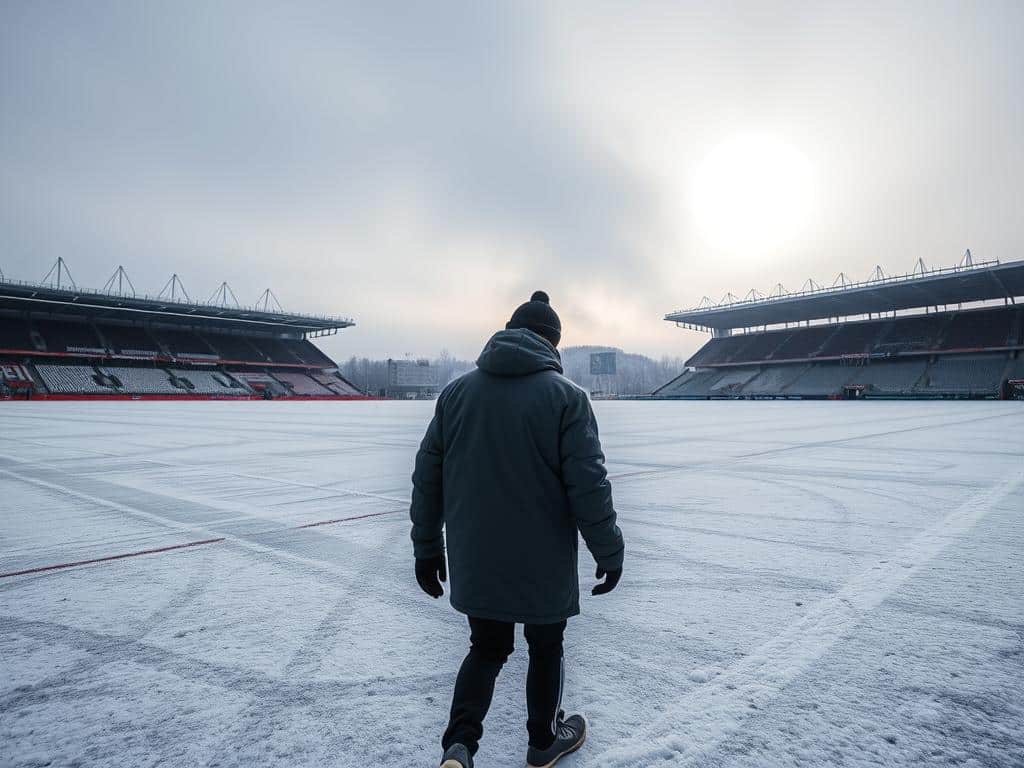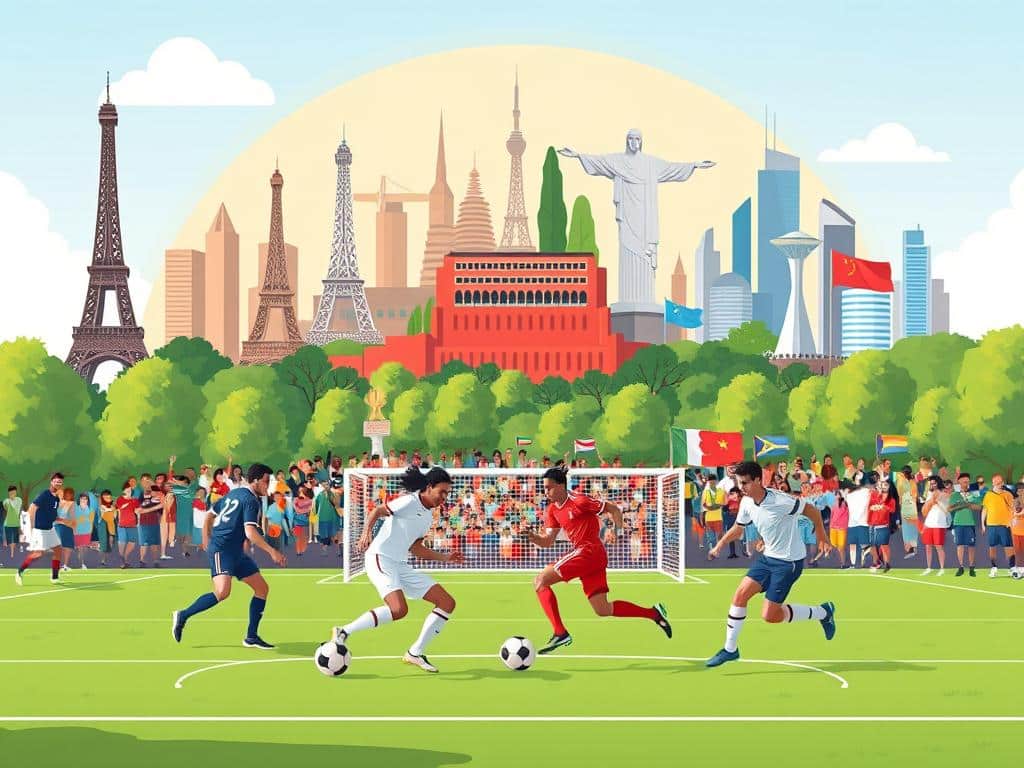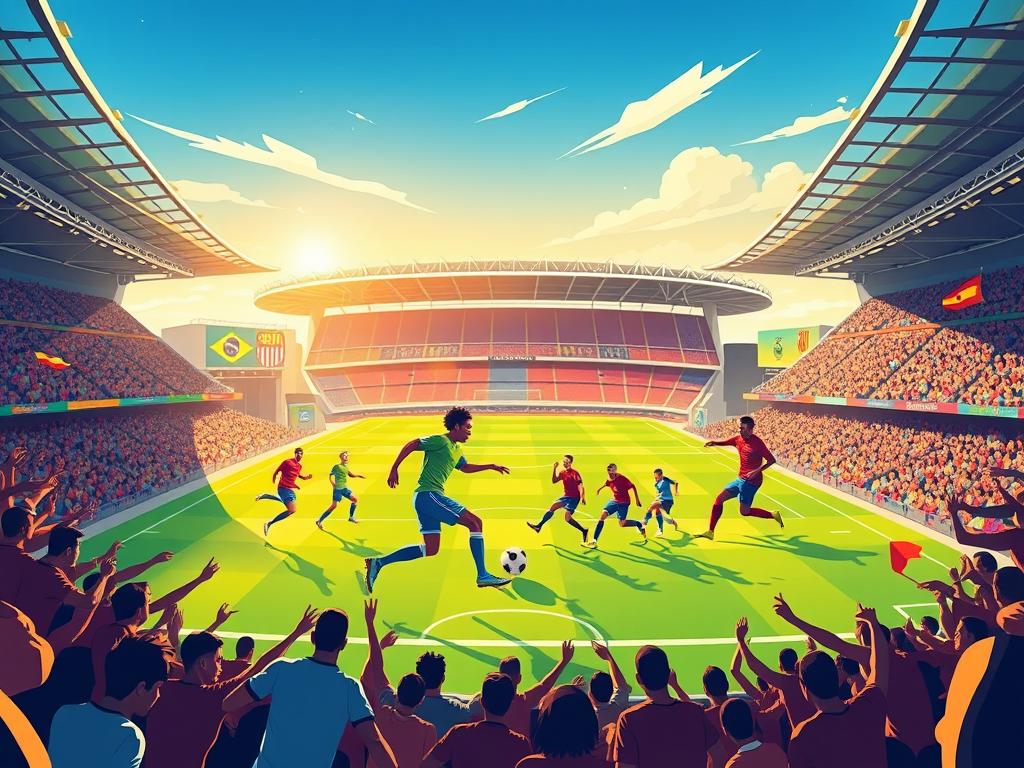From the 1930s to today, these players turned defending into an art form. The famous catenaccio system was born here, influencing modern tactics worldwide.
World Cup heroes like Maldini and Cannavaro didn’t just win trophies. They became symbols of excellence, blending skill with fearless leadership. Get ready to meet 10 legends who defined an era.
Introduction: Italy’s Legacy of Defensive Greatness
No nation has mastered defensive play like Italy throughout football history. For over 100 years, their backline legends have turned resilience into an identity, blending tactical genius with flawless execution.
The art of defending: Italy’s football identity
Italian football thrives on discipline. From the catenaccio system of the 1960s to today’s zonal marking, defenders here don’t just stop goals—they control games. Think of it as chess with cleats.
This philosophy birthed icons who outshone strikers. While attackers grab headlines, Italy’s trophies were built on clean sheets. Their 2006 World Cup win? Just two goals conceded—a tournament record.
How defenders shaped Italy’s World Cup and European Championship triumphs
In 1982, a rock-solid backline anchored their third World Cups title. Fast-forward to 2006: Fabio Cannavaro’s leadership mirrored Scirea’s 1982 heroics. Even their first European Championship in 1968 was won by defenders who refused to buckle.
Tournaments aren’t just won by goals. Italy’s four global titles and two European Championship crowns prove defense isn’t a tactic—it’s their DNA.
The 10 Most Iconic Italy National Soccer Team Defenders
Defenders don’t always get the spotlight, but these 10 Italian legends earned theirs through sheer brilliance. Their careers spanned decades, filled with trophies, leadership, and moments that changed football forever.
Ranking criteria: Honors, impact, and longevity
What makes a defender the best player in history? We weighed three key factors:
- Honors: World Cup and Euro wins, serie titles, and individual awards like the Ballon d’Or.
- Impact: How they influenced games, teammates, and even tactical systems.
- Longevity: Careers spanning 15+ years at the international level and elite clubs.
World Cup performances carried extra weight. Legends like Cannavaro and Scirea didn’t just play—they dominated tournaments. Club success with giants like AC Milan and Juventus also boosted their legacies.
Fair play mattered too. Gaetano Scirea’s sportsmanship awards remind us greatness isn’t just about tackles and trophies—it’s about respect.
1. Paolo Maldini: The Timeless Maestro
Few players in football history have defined excellence like Paolo Maldini. His name is synonymous with defensive brilliance, blending intelligence, leadership, and unmatched longevity. For 25 years, he wasn’t just a player—he was AC Milan’s heartbeat.
Club loyalty: 25 years at AC Milan
Imagine playing 902 games for one team. Maldini did, becoming Milan’s all-time appearance leader. His 7 Serie A titles and 5 Champions League wins cement his legacy as the club’s greatest.
He revolutionized defending by shifting from left-back to center-back. His “perfect positioning” philosophy meant fewer tackles, more interceptions—a masterclass in efficiency.
International career: Near-misses and unmatched consistency
Despite his club dominance, the national team brought heartbreak. The 1994 World Cup final penalty loss to Brazil haunted him. Yet, he holds the record for most World Cup minutes (2,217) without lifting the trophy.
Maldini’s consistency was unreal. Even without international silverware, his 126 caps and leadership made him defender royalty. His time on the pitch wasn’t just long—it was legendary.
2. Franco Baresi: The Sweeper Who Redefined Defense
At just 5’9″, Franco Baresi shattered stereotypes by becoming one of football‘s most dominant sweepers. His career wasn’t about physicality—it was a masterclass in anticipation, earning him the nickname “Kaiser Franz” for his German-like precision.
AC Milan’s Invincibili era
Imagine a defender so sharp he could predict passes before they happened. Baresi’s 716 appearances for Milan anchored their legendary backline, winning six Serie A titles and three European Cups. His partnership with Maldini and Costacurta was poetry in motion—each knowing the other’s next move.
He perfected the offside trap, turning it into a weapon. Opponents dreaded his timing, often caught flat-footed by his tactical genius. Even today, coaches study his clips to teach defensive positioning.
1982 World Cup: A young star on the rise
Baresi’s 1982 World Cup role was brief but pivotal. At 22, he learned from veterans like Scirea, soaking up lessons that shaped his career. Though he played only one match, the tournament’s winning mentality fueled his rise.
Decades later, FIFA honored him as the 19th-best player of the 20th century—proof that greatness isn’t measured in height, but in legacy.
3. Fabio Cannavaro: The Berlin Wall of 2006
Defenders rarely steal headlines, but Fabio Cannavaro rewrote the rules in 2006. His captaincy and flawless performances propelled Italy to their fourth World Cup, proving defense wins championships.
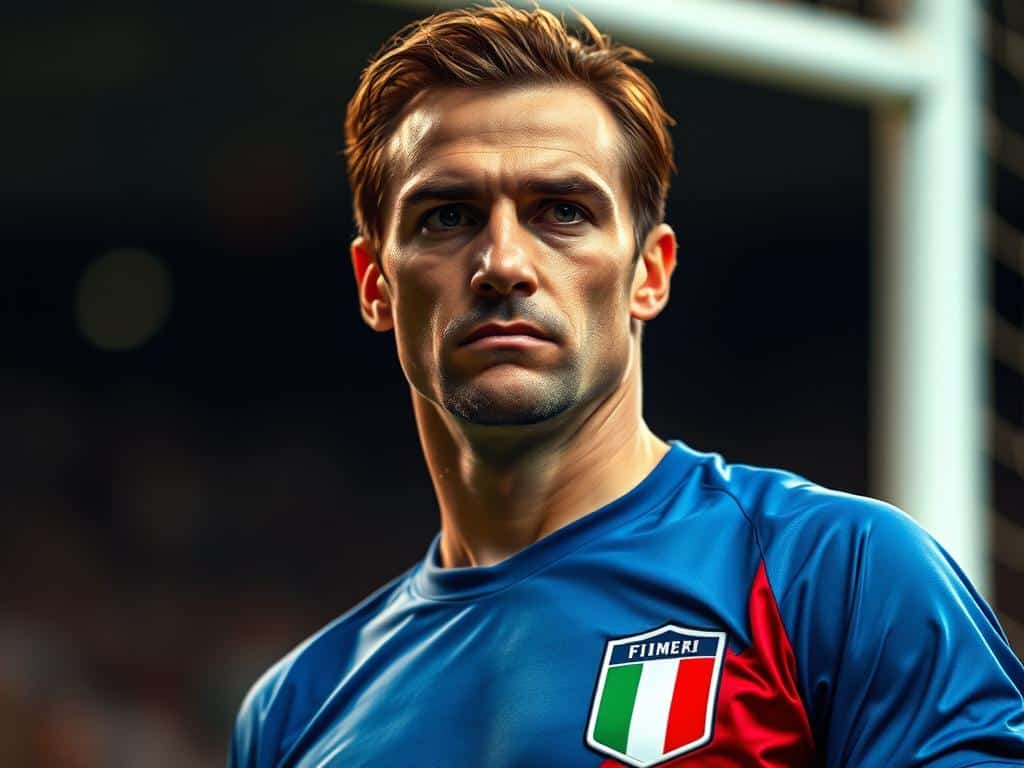
Ballon d’Or triumph: A defender’s rare feat
In 2006, Cannavaro achieved the unthinkable—he won the Ballon d’Or, the first defender in 30 years to do so. His ability to shut down elite attackers like Zidane in the final showcased why. Even amid Italy’s calciopoli scandal, his integrity shone, leading an anti-doping campaign that restored pride.
Leadership in Italy’s 2006 World Cup victory
Cannavaro’s 2006 World Cup stats were unreal: 5 clean sheets, 0 goals conceded from open play. At 5’9”, he out-jumped taller forwards, combining anticipation with fearless tackles. His 136 caps—second-most for Italy—reflect his adaptability, excelling at center-back and right-back.
FIFA named him World Player of the Year, a fitting crown for a defender who turned resilience into art. Whether intercepting passes or rallying teammates, Cannavaro was the unstoppable force behind Italy’s glory.
4. Gaetano Scirea: The Elegant Libero
Some defenders tackle hard—Scirea outsmarted opponents with grace, never earning a single red card. His career redefined the libero role, blending intelligence with quiet dominance. To watch him play was to see football as chess, each move calculated and clean.
1982 World Cup: The backbone of Italy’s defense
The 1982 World Cup showcased Scirea’s genius. Partnering with goalkeeper Dino Zoff, he directed Italy’s backline like a maestro, conceding just six goals in seven matches. His interception against Brazil in the quarterfinals remains a masterclass in positioning.
Opponents rarely dribbled past him. Instead, he anticipated passes, guiding the team to their third title. UEFA later called him the “greatest European champions defender never to win the Euros”—proof his impact outshone trophies.
Juventus’ golden era and tragic legacy
For 14 years, Scirea anchored Juventus’ defense, winning every UEFA club competition. His sportsmanship was legendary—no red cards, no diving, just pure class. Even rivals respected his fair-play ethos, now honored with an award in his name.
Tragedy struck in 1989 when he died at 36, but his legacy lives on. Today’s defenders still study his clips to learn how to dominate without brutality. Scirea didn’t just play; he elevated the game.
5. Giacinto Facchetti: The Pioneering Wingback
Giacinto Facchetti didn’t just defend—he attacked like a forward, rewriting the fullback playbook forever. With 75 career goals, he proved defenders could dominate both boxes. His legacy? A blueprint for modern wingbacks.
Inter Milan’s Grande Inter dominance
Under Helenio Herrera, Facchetti became Inter’s turbocharged weapon. His speed and stamina let him sprint up the flank, then recover defensively—a tactic now standard. With him, Inter won four Serie A titles and two European Cups, dominating the 1960s.
Opponents dreaded his overlaps. He’d start a play at left-back and finish it in the box. Inter retired his #3 jersey in 2006, a first for any player at the club.
Euro 1968: Italy’s first major trophy
Facchetti’s leadership shone in the Euro 1968 final replay against Yugoslavia. As captain, he marshaled a defense that kept a clean sheet in the 2-0 win. His 94 caps stood as a record for defenders until 2021.
Want to see defending with flair? Watch Facchetti’s highlights. He didn’t just stop attacks—he started them, blending grit with creativity.
6. Alessandro Nesta: The Complete Center-Back
Elegance meets toughness in Alessandro Nesta, a defender who made perfection look effortless. His career blended ballet-like grace with rock-solid defending, setting a standard few have matched.
Injury heartbreak in the 2006 World Cup
The tournament that should have been Nesta’s crowning moment turned cruel. A groin injury in the group stage forced him out early, robbing fans of seeing him face Zidane in the final.
Yet his influence remained. Teammates later credited his pre-game analysis for helping shut down opponents. Even off the pitch, his football IQ lifted the team.
Serie A Defender of the Year: Four-time winner
From 2000-2003, Nesta owned this award like no other. His secret? Anticipation so sharp he rarely needed tackles. Coaches still use his clips to teach positioning.
At Lazio, he became captain at 22 before moving to AC Milan. There, he formed legendary partnerships—first with Maldini, then Thiago Silva. Together, they won two Champions League titles.
Nesta’s legacy? The last true “pure” Italian defender. In modern football’s physical era, his intelligence and timing remain unmatched in history.
7. Claudio Gentile: The Ultimate Man-Marker
Twenty-three fouls in one game? For Claudio Gentile, it was just another day shutting down legends. This Libyan-born defender redefined aggressive marking, blending tactical fouls with flawless positioning to neutralize the world’s best attackers.
1982 World Cup: Neutralizing Maradona and Zico
Gentile’s 1982 World Cup performance became instant folklore. Assigned to mark Diego Maradona, he shadowed Argentina’s star like a second jersey—committing 23 fouls without a red card. His “legal brutality” approach also silenced Brazil’s Zico in the iconic 3-2 win.
Here’s the genius: Gentile studied opponents’ dribbling patterns. Against West Germany in the final, he anticipated every run, helping Italy keep a clean sheet. Three Ballon d’Or winners (Maradona, Zico, Rummenigge) fell to his relentless marking that tournament.
Juventus’ silverware-laden decade
At Juventus, Gentile anchored a team that dominated Serie A. His six league titles included the 1984-85 European Cup win. Originally a midfielder, he transitioned to defense under Giovanni Trapattoni—a move that extended his career into his late 30s.
Modern defenders still study his clips. Gentile proved you could dominate without pace by mastering:
- Pre-emptive positioning: Cutting angles before attackers moved
- Tactical fouling: Disrupting rhythm without reckless challenges
- Psychological edge: Unnerving stars with constant pressure
His legacy? A blueprint for frustrating elite forwards—one perfectly timed jersey tug at a time.
8. Giuseppe Bergomi: Inter’s One-Club Legend
Imagine winning the World Cup before your 20th birthday—Giuseppe Bergomi did just that. This Inter Milan icon blended old-school toughness with rare versatility, becoming a blueprint for loyal defenders everywhere.
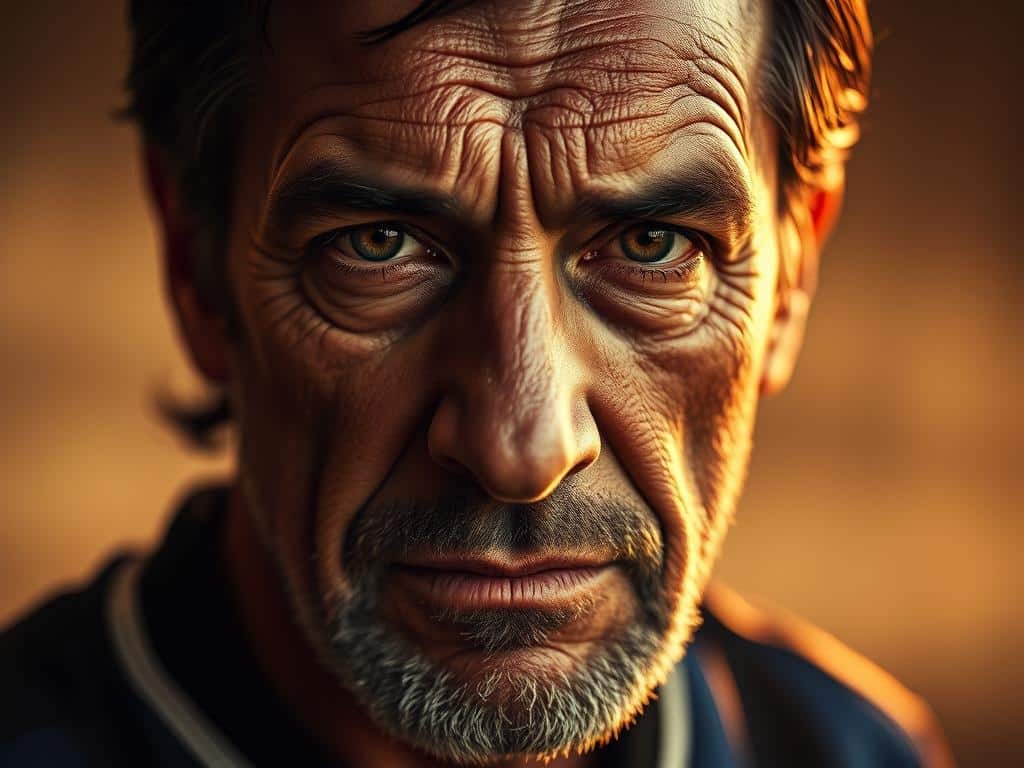
1982 World Cup: A teenage champion
You’d never guess this baby-faced teen would outplay seasoned stars in Spain. At 18, Bergomi became Italy’s youngest champion since 1938, starting in the final against West Germany.
His marking of Karl-Heinz Rummenigge showcased maturity beyond his years. Coach Enzo Bearzot trusted him so much, he played every minute after the group stage. That tournament proved Bergomi wasn’t just a prospect—he was world-class.
756 appearances for Inter Milan
For 20 time-tested years, Bergomi was Inter’s rock. His 519 Serie A games for one club remain a record. Fans adored his iconic mustache and “Lo Zio” (The Uncle) nickname—a nod to his wise presence.
Even during lean years, he never chased bigger clubs. His 1990 World Cup semifinal performance summed up his genius: marking Maradona, then switching to three other positions mid-game. That’s why purists call him the last true Italian fullback.
9. Alessandro Costacurta: AC Milan’s Defensive Stalwart
While flashy defenders grab attention, Alessandro Costacurta mastered the art of silent dominance. His name belongs on any list of football’s most underrated geniuses. For 20 years, he was the glue holding together Milan’s legendary backlines.
Seven Serie A titles and five European Cups
Costacurta’s trophy cabinet sparkles with 7 league titles and 5 Champions League wins. He was crucial to Milan’s famous 58-game unbeaten streak in 1991-93. Even at 41, he started in the 2007 final against Liverpool – becoming the oldest outfield player in final history.
His secret? Anticipation over aggression. While others relied on tackles, Costacurta intercepted passes before they happened. Coaches loved his discipline – just 3 red cards in 663 appearances.
The ultimate defensive partner
Costacurta perfected the art of complementing stars. With Baresi, he covered spaces behind the sweeper. Alongside Maldini, he shifted to right-back seamlessly. Ancelotti called him “the orchestra conductor” for how he organized defenses.
Sacchi’s famous pressing system relied on his intelligence. When tactics evolved, Costacurta adapted – even playing defensive midfield in his late 30s. That versatility made him indispensable across four decades.
In modern football where defenders specialize, Costacurta’s all-round mastery feels almost mythical. He proved greatness isn’t about highlights – it’s about always being in the right place.
10. Tarcisio Burgnich: The Silent Guardian
Great defenders don’t need flashy stats—Tarcisio Burgnich proved that. You won’t find highlight reels of his tackles, but teammates knew his value. For 15 years, he was the bedrock of Inter Milan and Italy’s backline.
Euro 1968 and the 1970 World Cup final
The european championship in 1968 showcased Burgnich’s versatility. He played every minute as Italy claimed their first major trophy. His marking in the final replay kept Yugoslavia scoreless.
Two years later, he faced his ultimate test: containing Pelé in the World Cup final. Though Italy lost 4-1, Burgnich limited the Brazilian star’s impact early. That result didn’t reflect his individual brilliance on football’s biggest stage.
Helenio Herrera’s Grande Inter blueprint
At Inter, Burgnich became Herrera’s perfect defensive anchor. His 467 appearances helped deliver:
- 4 Serie A titles
- 2 European Cups
- 2 Intercontinental Cups
His midfield beginnings gave him rare passing skills. Herrera used this to launch counterattacks from deep. Teammates called him “The Invisible Wall” because he stopped threats before they became dangerous.
Burgnich’s 66 caps brought no individual awards—just respect from peers who knew his worth. When Italy faced West Germany in the 1970 “Game of the Century”, his positioning was flawless. That’s how silent guardians operate.
Honorable Mentions: More Italian Defensive Titans
Behind every legendary lineup stand unsung heroes who shaped history. These Italian players might lack global fame, but their contributions were game-changers for clubs and country.
Ciro Ferrara: Juventus’ unsung hero
With 500+ appearances for Juventus, Ferrara was the silent force behind six Serie A titles. His 1990 UEFA Cup win showcased his tactical genius—reading plays like a chessmaster.
Though overshadowed by flashier names, his partnership with Montero formed one of Serie A’s toughest backlines. Fans called him “The Wall” for his knack for last-ditch blocks.
Giorgio Chiellini: Modern-era grit and leadership
Chiellini’s 17-year Juventus stint redefined resilience. His 2020 Euro victory—playing through a torn ACL—epitomized his warrior spirit. Few defenders performed at the highest international level with such consistency.
Teammates adored his “BBC” trio with Barzagli and Bonucci. Even at 37, his iconic jersey-grab on Saka in the Euro final proved age couldn’t dull his edge.
Other legends who left their mark:
- Antonio Cabrini: Scored in a World Cup final—a rare feat for defenders.
- Andrea Barzagli: Completed Juventus’ “BBC” with flawless positioning.
- Tarcisio Burgnich: Pioneered the modern fullback role with Inter Milan.
Italy’s Defensive Tactics: From Catenaccio to Modern Mastery
What separates good defense from legendary defense? Italy’s tactical blueprint holds the answers. We’ll explore how systems evolved from rigid man-marking to fluid hybrid approaches that dominated football history.
How these defenders influenced Italy’s playing style
Helenio Herrera’s 1960s catenaccio wasn’t just a system—it was a revolution. The “door bolt” approach used a libero to sweep behind man-markers, creating numerical superiority. Legends like Facchetti turned it into an attacking weapon with overlapping runs.
By the 1980s, zonal marking replaced strict man-to-man duties. Scirea’s anticipation made this shift possible, reading opponents rather than chasing them. Sacchi later shocked the world with his high defensive line, proving pressure could start from the back.
Key tournaments where defense decided Italy’s fate
The 1994 World Cup showcased defensive perfection. Italy reached the final conceding just two goals in six games. Their semifinal clean sheet against Spain remains a masterclass in organized defending.
In 2006, Cannavaro’s leadership conceded only two goals all tournament—none from open play. Modern hybrid systems under Mancini blend these lessons, using ball-playing defenders like Chiellini to control games.
From Herrera’s bolts to Sacchi’s lines, Italian tactics prove one truth: great defense isn’t reactive—it’s chess played at full speed.
World Cup Moments: Defenders Who Carried Italy to Glory
World Cups aren’t won by strikers alone—Italy’s defenders wrote history with their backs against the wall. Two tournaments stand out: 1982 and 2006. Both victories were built on defensive brilliance that left attackers frustrated and fans in awe.
1982: Scirea and Gentile’s Tactical Brilliance
The 1982 World Cup was a clinic in defensive synergy. Gaetano Scirea, the libero, orchestrated play like a conductor, while Claudio Gentile marked rivals into oblivion. Together, they anchored a backline that kept 5 clean sheets.
Gentile’s man-marking was legendary. He shadowed Maradona and Zico so tightly, they barely breathed. His 23 fouls in one game? All tactical—never reckless. Scirea, meanwhile, intercepted passes before they happened. Their partnership was the backbone of Italy’s third title.
2006: Cannavaro’s Immovable Presence
Fast-forward to the 2006 World Cup. Fabio Cannavaro played every minute without a single error—690 minutes of perfection. At 5’9″, he out-jumped taller forwards, combining anticipation with fearless tackles.
His leadership was just as vital. Amid Italy’s FIFA World Cup scandal, Cannavaro rallied the squad. The result? Just two goals conceded (both set-pieces) and a trophy lifted in Berlin. His Ballon d’Or win that year? Icing on the cake.
Other iconic moments:
- Gianluca Zambrotta: Switched between right and left-back seamlessly, shutting down flank attacks.
- Franco Baresi: Played the 1994 final just 25 days after knee surgery—a warrior’s effort.
- Giuseppe Bergomi: At 18, he started in the 1982 final, marking Rummenigge into silence.
Where Are They Now? Life After the Pitch
Retirement doesn’t mean the end—these legends continue shaping football in new ways. From coaching to TV analysis, their post-career journeys prove greatness isn’t confined to the field.
From Captains to Coaches
Paolo Maldini returned to AC Milan as technical director, rebuilding the team he once led. His eye for talent helped sign stars like Theo Hernández. Meanwhile, Fabio Cannavaro took his leadership abroad, managing in China and the United Arab Emirates.
Franco Baresi’s legacy lives on at Milan’s youth academy. For over 15 years, he’s mentored future defenders, passing down his iconic sweeper techniques.
Beyond the Sidelines
Giorgio Chiellini swapped Serie A for LAFC—and Harvard. While playing in MLS, he pursued a master’s degree, proving defenders excel off the pitch too. Alessandro Nesta also crossed the Atlantic, coaching Miami FC and later joining UAE’s Al-Nasr.
Ciro Ferrara stays close to the game as a UEFA technical observer. His role? Analyzing matches and sharing insights—a perfect fit for his tactical mind.
- Mauro Tassotti: Became a sought-after assistant manager across Europe, working with Ancelotti at Real Madrid.
- Claudio Gentile: Transitioned to punditry, breaking down matches with the same intensity he marked opponents.
Their post-playing careers show one truth: legends never truly leave the game. Whether shaping young talent or analyzing tactics, they remain a vital part of football’s future.
Why Italy’s Defenders Remain Unmatched in Football History
Three Ballon d’Or wins prove defenders here aren’t just good—they redefine greatness. No other nation produces one greatest after another, blending brains with grit. It starts young: academies prioritize positioning over flashy tackles, crafting thinkers who read the game like a playbook.
Compare the stats. Italian backlines concede fewer goals in major tournaments than any football power. Why? Culture. Here, a clean sheet earns as much praise as a hat-trick. Serie A’s tactical battles sharpen instincts—every match is a masterclass in anticipation.
Today’s stars still study these legends. From Maldini’s calm to Cannavaro’s leadership, their influence transcends time. That’s the secret: Italy doesn’t just train defenders. It builds artists who turn defense into domination.

